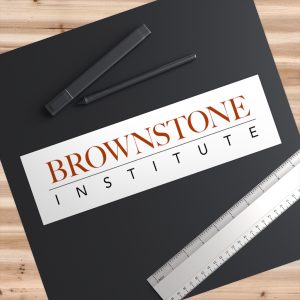The Problem with Selling the Problem
Industries seeking investment need a ‘pitch’ to convince potential investors. International public health has been prioritizing pandemics as an ‘existential threat’ to humanity. Despite analysis showing that such claims are poorly evidenced and inflated, the pandemic preparedness agenda continues to dominate the global health lexicon and its funding.
Whilst pandemics have had considerable impact historically, a natural pandemic large enough to cause a major and acute reduction in life expectancy has not occurred since the Spanish flu in 1918-19. The Covid-19 outbreak and response resulted in an overall reduction of 1.6 years of life-expectancy in 2020-2021 and is likely to have arisen from a non-natural source.
Yet, a perceived need to raise increased fear of pandemics in the eyes of the public has driven modelers to employ questionable methodologies in order to demonstrate increased risk. One such method has been to include ancient events (e.g. the Medieval Black Death and Spanish flu) from the era before modern medicine. By doing so, and by averaging out mortality over time, it becomes possible to generate estimates of ‘current’ high ‘average’ mortality.
While such lax use of data can produce estimates of up to 2.5 million deaths per year, the results are misleading. This is because this method ignores advancements in hygiene, sanitation, and medicine. In terms of outbreak frequency, recent reports promoting the pandemic agenda also ignore developments in technology that enable us to distinguish small outbreaks from the background of illness.
Ignoring these confounders helps to instill fear, which sharpens attention and motivates investment. Thus, an appropriate contextualisation of outbreaks, such as the medieval plague, paints a very different picture. Namely, the mortality caused by outbreaks on average is seemingly reducing longitudinally, consistent with what we would expect from technological, social, and medical advancements, and empirically consistent with trends in infectious diseases more generally.
The costs of pandemic responses have, however, been rapidly rising, with the overall impact of Covid-19 estimated at $9 trillion despite it affecting predominantly post-working-age adults. Based on assumptions of risk inconsistent with historical trends, poorly founded assumptions of effectiveness of countermeasures, and the high costs of these countermeasures employed during Covid-19, international agencies have been advocating for a major diversion of resources to reduce pandemic risk. These numbers are substantial and not without considerable opportunity costs.
While the University of Leeds REPPARE project has highlighted a lack of evidence to support claims of increasing pandemic risk and exposed inflated estimates concerning the associated returns on investment, the momentum to invest, and in some cases divert, increasing resources to this area has continued.
Here we briefly discuss our continued concern with the direction of international public health that requires urgent and honest debate and reflect upon how the change of administration in the United States (US) and its immediate action to leave the World Health Organization (WHO) may affect this debate. The public health sector and its burgeoning pandemic-industrial complex may by its very nature be no longer able to undertake such an internal debate. However, given a reduction in overseas development assistance (ODA) and the resultant from international and national economic challenges, there is an acute opportunity and an imperative for a more meaningful and rational debate on the future of WHO.
Rethinking Resilience to Pandemics
Although global outbreaks of severe disease are historically rare with reducing human toll over recent centuries, pandemics – defined as an unusual increase in a disease involving many countries and with a clearly defined causative pathogen – will continue to happen. Most new pathogens cause mild illness such as minor upper respiratory tract symptoms (common colds) and require no specific response.
Reducing susceptibility to severe outcomes through improved nutrition and metabolic health will reduce susceptibility generally, whilst also reducing risk from endemic infectious diseases and reducing non-communicable disease burdens. Improving sanitation will do the same, particularly reducing risk from diseases spread by faecal-oral routes.
Such improvement in general health and living conditions is the major driver of increased life expectancy in wealthier countries and was a major focus of international public health in former decades. These responses for building human and communal resiliency against health risks (of all kinds) should not be sidelined.
Similarly, strengthening primary care and general health infrastructure will serve a broad purpose whilst also addressing resilience against rare outbreaks. The primary care focus of the 1970s Alma Ata declaration reflected the broad public health consensus in this respect, emphasizing access to basic services and community input on what such services should be. In other words, resilient people and systems make for better health security, acting as the ‘frontline’ against severe and widespread illness, whether it is from a novel zoonosis or existing genetic variants of more common pathogens.
Nevertheless, as with the response to Covid-19, resilience against pandemics has increasingly been associated with a diversion of resources to increase surveillance and diagnostics for pathogen threats, and to institute restrictions on human activity until mass vaccination is possible via rapid vaccine development.
As this strategy is geared to naturally occurring outbreaks, the surveillance effort is vast and expensive. While it may potentially offer some positives for infectious disease control beyond pandemic preparedness, such knock-on effects are seemingly limited, since high-burden diseases such as malaria, HIV/AIDS, and tuberculosis require, and have, quite specific responses. Moreover, non-natural outbreaks, such as an accidental laboratory release of modified organisms, will require a much different type of action and/or method of preparedness, where broad-scale surveillance mechanisms would only detect the pathogen after it has spread.
Approaches that rely on surveillance-restrict-vaccinate strategies also rely on the restrictions being effective in halting pathogen transmission without causing greater burdens as may occur from workplace and school closures, supply line restrictions, and restricted access to general health care. For example, it is unclear whether any net benefit was obtained through restrictive mandates during Covid-19, but it is clear that the costs to economies globally were enormous, with a reversal of previous trends on poverty reduction.
One undisputed outcome of Covid-19 policy, however, was a considerable concentration of wealth including sizable profits accrued by the Pharma sector. This presents incentives that impact future pandemic policy that can be antithetical to improving overall public health outcomes. There is little in national or international preparedness plans that address long-term harms of such strategies and thus these remain an important concern, whether or not the current WHO pandemic preparedness agenda is advanced or scuppered.
WHO IHR Amendments and Pandemic Agreement
The amended International Health Regulations (IHRs) were passed by the World Health Assembly in June 2024, while the draft Pandemic Agreement continues to add “green lines” to its text. As was recently reported to a member of REPPARE, the International Negotiating Body (INB) was seeking to “green-line” as much text as possible through a series of scheduled and ad hoc meetings prior to the inauguration of Donald Trump in order to limit his administration’s ability to pursue reversals.
As part of this effort, the Financing Coordination Mechanism that will finance both the IHRs and Pandemic Agreement has been hastily agreed by the Intergovernmental Negotiating Body (INB), and the WHO is currently drawing up plans on how that instrument will function. Regardless of US involvement, this new mechanism will help facilitate the IHRs’ amendments for any of the remaining 193 members who do not formally reject them.
Further late-stage additions to the Pandemic Agreement in a draft reflecting progress (up to 15 November 2024) also demand debate. A new paragraph in Article 1 seeks to potentially impose constraints on individuals by recognizing an individual’s duties to other individuals and to the community they belong to, as well as a broader responsibility of ‘relevant stakeholders’ to ‘strive’ to observe the ‘objective’ of the Pandemic Agreement. These responsibilities would be held by citizens, not states, and would presumably give the right for signatories to police would-be offenders, regardless of their nationality.
This addition to the Agreement could be just another innocuous normative statement for a global humanity, yet individual rights and responsibilities appear to be an emerging theme of increasing prominence in the discourse surrounding the pandemic preparedness agenda. A similar thread of equating individualism to a high level of pandemic risk was coincidentally introduced by the WHO-supported Global Pandemic Monitoring Board in its 2024 annual report, supporting concerns that the notion of diminishing basic human rights and free will is creeping into policy.
The Pandemic Industrial Complex
Despite some setbacks to the amendments to the WHO International Health Regulations and draft Pandemic Agreement, the pandemic preparedness agenda continued largely unabated over the past year. The increasing role of surveillance to bring low-burden outbreaks into the international consciousness was seen in the attention given to the Mpox outbreak, and more recently the outbreak of a ‘mystery’ febrile disease, which is now thought to have been predominantly endemic malaria in the Democratic Republic of Congo (DRC).
Similar escalation is witnessed by surveillance-enhanced messaging around the Marburg virus outbreak in Rwanda and avian influenza in the US. Again, as with the recent pandemic mortality models discussed above, the growing ability to find and track diseases increases the ability to escalate their risk potential. Although the detection of disease is generally always a good thing, it can also lead to abuse and excessive profiteering, where vested interests can run counter to public health.
Despite Trump’s executive order for the US to exit the WHO, the “four horsemen” of pandemic preparedness are now officially launched and are submitting fresh investment cases to donors. These horsemen include the World Bank’s Pandemic Fund (now with two grant rounds), the WHO Bio-Hub/International Pathogen Surveillance Network (backed by Germany and its pharmaceutical industry), the 100 Days to Vaccine Mission (which the US helped promote), and the Medical Countermeasures Platform. What is striking about this institutionalization is that it is entirely focused on funding surveillance, diagnostics, vaccine discovery, and scaled-up vaccine/therapeutics manufacturing and distribution. This raises two concerns.
First, it represents a near-wholesale commitment to the securitization and biomedicalization of pandemic preparedness. This not only sidelines more traditional public health responses that served well in pre-Covid outbreaks, but also ignores the types of preventative measures of human and system resiliency discussed above.
It is, in essence, putting all eggs in one basket and over-fetishizes a Pasteurian paradigm, where disease is understood as being unilaterally caused by an external pathogen against which a specific remedy should be found. This neglects metabolic, social, and environmental factors that influence individuals’ susceptibility to disease, and that were associated with most Covid-19 mortality. At present, regardless of its position on the WHO, the US remains heavily invested in this approach.
Second, it implies a renewed commitment to restrictive non-pharmaceutical interventions reminiscent of those experienced during Covid-19. This is because governments would still have at least ‘100 Days to Vaccine’ (assuming all goes as planned) and would seek to put into place measures to control the outbreak while a ‘saviour vaccine’ is produced. Although there are several options to choose from, and in many ways the nature of the outbreak should dictate an appropriate response, there is reason to worry that more radical measures would again be used with very high economic and social costs.
This is not simply speculative. Despite recent political moves in opposition to the pandemic preparedness agenda, most narratives remain intact globally with many institutions “doubling down” on promoting the high risk of near-term pandemics and the appropriateness of proposed policy responses. These narratives continue to drive a host of WHO preparedness recommendations, guidelines, and financial requests.
The result of this funding is an increasing workforce dedicated to preparing for, identifying, and responding to outbreaks and pandemics. This comes at a cost in the diversion of resources that would otherwise be available elsewhere. Further, the workforce is dependent on continued funding predicated on the notion of high pandemic risk, meaning that they are incentivized as an industry to publicize and exaggerate risk, and to prioritize the needs of those responsible for their continued support.
Whether this involves countries, or other entities that benefit from commodities tied to the new paradigm of pandemic prevention, preparedness, and response (PPPR), such as vaccines or diagnostic technologies, the potential for conflict of interest is again clear. Like concerns with engrossment of the military-industrial complex highlighted by President Eisenhower 64 years ago, the potential exists for a skewing of public health and society away from rational approaches to health and toward one that benefits those with influence on policy; namely, an emerging pandemic-industrial complex.
The confluence of government and non-governmental interests such as pharmaceutical companies, private foundations, and trusts raises issues regarding the very underpinnings of human rights and democracy. At a policy level, fiduciary responsibilities to ensure shareholder interests are intermingled within the large public-private partnerships.
These intersect with human rights imperatives of bodily autonomy and non-coercion, especially when mandates associated with policy disrupt everyday life. With the commoditization of the pandemic response, the worry is that we are building a system in which the incentives for policymakers and staff are to prioritize return on financial investment over the rights and health of the populations they are ostensibly intended to serve. These concerns hold at country and international levels, with the US in no way immune to these dynamics.
The Notice of United States Withdrawal
On January 20th, 2025, President Donald Trump signed an executive order “withdrawing the United States from the World Health Organization.” In Section 4 of the order, the US will also “cease” negotiations on the WHO Pandemic Agreement and the International Health Regulations, “with actions taken to effectuate such agreement and amendments” having “no binding force on the United States.”
In terms of pandemic prevention, preparedness, and response (PPPR) this is a seismic event with significant implications and opportunities.
Fully withdrawing from the WHO requires a year’s notification according to US domestic law (which Congress could modify) and under accepted international standards. Ignoring international expectations will carry little direct consequence for the US, but it does set a precedent that could undermine aspects of international order elsewhere. In other words, there could be indirect effects on the saliency of international law and treaties more generally, and the US could find itself hypocritically telling states “to do as you are told” regarding international law, “and not as we do.”
It is also foreseeable that an immediate withdrawal from the WHO without a year’s notification would seriously impact human health. As the largest financial contributor to the WHO, a sudden exit threatens to disrupt programmes on the ground, particularly in low-resource settings with high disease burdens. This not only raises serious moral questions, but also practical concerns about its effect on regional instability, economies, and US interests.
Moreover, the amendments to the International Health Regulations (IHRs) were adopted in June 2024 and are no longer ‘under negotiation;’ thus the US is not preventing their adoption per se but merely not ratifying them. Other Member States may follow suit, while others may not. In practice, this means that the US and other non-ratifying states would still be signatories to the 2005 IHRs, which do have legal standing. Although this creates two sets of regulations, in practice the bottom will not completely fall out of global cooperation. The obligations of the 2005 IHRs still hold, at least on paper. In addition, just because the US and others haven’t officially ratified the amended IHRs doesn’t also mean that they won’t or can’t adopt some amended items if they so choose.
As for the Pandemic Agreement, the removal of the US still leaves 193 Member States to finalise any agreement by May 2025. Prima facie, the exiting of the US does spell trouble for the Agreement since the US brings considerable normative, technical, political, and economic force to it.
For example, it is hard to imagine the Pandemic Agreement fulfilling its mandate without the considerable funding that the US injects into global health policy. In addition, without the US pursuing general compliance from other Member States, it is hard to see how an already weakly worded Agreement would command much respect. Like it or not, the US enjoys the greatest “convening power” of any country with largely unequalled “soft” and “hard” power. Thus, according to many of those involved with the Pandemic Agreement, the removal of the US would essentially kill off the Agreement.
That said, there is room to debate the US strategy regarding the WHO and his administration’s position on pandemic preparedness. On one hand, there is the real possibility that the US is using withdrawal from the WHO to gain leverage and force needed reforms. By raising an executive order on day one of his presidency, Trump instantly increases his leverage while giving himself one year to force concessions.
This not only puts pressure on the WHO and other Member States to alter practice (China is singled out in the executive order for not paying its fair share), but signals his seriousness, creating additional uncertainty, and negotiating leverage. On the other hand, Trump may truly want to leave WHO and its international policies, in which case, he has wasted no time in doing so.
Regardless of intent, the US’s actions will undoubtedly force a rethink of the current pandemic preparedness agenda and its instruments. Whether this rethink ultimately obliterates PPPR policy or forces needed reform, or leaves them more firmly in the hands of vested interests with a loss of US influence, time will tell. The next year will provide opportunities for change, and it is therefore useful to take stock.
The Potential for a Rethink
While the pandemic agenda is rapidly proceeding, the lack of evidence underpinning it and the flaws demonstrated in its funding justification are likely to become increasingly apparent. Funding to maintain surveillance hubs in Germany and dormant manufacturing lines in pharmaceutical plants is funding that is not being directed at far higher disease burdens in both low- and high-income populations. While the industry funded with these measures will advocate for continuance and growth, diversion from other health and societal priorities will translate into harms that will become hard to ignore.
While those that directly counter the prevailing pandemic narrative continue to be labelled as “anti-science” and “a public health risk” by the public health community REPPARE has more recently experienced greater acceptance of our counterevidence, suggesting the potential for a much wider and deeper debate. The change in the US administration has been one of the drivers of this, but there may also be a gradual recognition of incongruities upon which the narrative depends. Given President Trump’s executive order, it is now assured that the debate will be opened further. Trump may not have killed the debate but merely escalated it to a new level of international “high politics.”
That said, the public health industry is currently receiving large amounts of pandemic funding and will find it difficult to change. It is human nature to resist downsizing and arguing oneself out of a job. Recognition of this human dynamic is key to implementing change. Furthermore, major public-private partnerships such as Gavi and CEPI, heavily invested in pandemic response, and with boards including entities invested in the health commodity market, face intrinsic difficulties in considering a reversal of the current course. Forces within the US will also lobby against change, especially where large profits are concerned. As a result, despite signs of a growing awareness and the focus of the new US administration, a thorough rethink of the current direction within the public health industry will still be heavily resisted.
The WHO holds an interesting position within this mix. As the only international health body governed solely by Member States, it has the theoretical potential to exclude private and corporate influence and an existing mandate to respond to the needs of Member States. While the current direction is toward greater commoditization, the WHO is bound to comply with the interests of States and their constituents. If the demand rises for clear evidence-based policy and protection of human rights, then in theory the WHO must comply and could act as a bulwark against private and vested interests. In practice, funding from private and corporate interests could incentivize staff to continue prioritizing the pandemic agenda, but the WHO budget is ultimately approved by Member States and such influences could, where deemed necessary by the States, be eliminated.
Moreover, the softening of wording in the negotiations around the IHR amendments and Pandemic Agreement indicates that the broader approach that the WHO must abide by is having an effect prior to the recent US election. Many States within the negotiation process have pushed back against what they see as unfair conditions written into the Agreement, challenging a global order that has historically had its way with less powerful ‘recipient’ States. In many ways, this renders the political process more legitimate, and more just. This should be applauded, yet it also gives the Trump administration a unique opportunity to pursue a WHO reform agenda in concert with other states, should sufficiently deep reform indeed prove possible.
The US withdrawal from the WHO does not remove the WHO and there is little indication that other states will follow Trump’s lead to exit. As a result, the future of the pandemic agenda will inevitably be influenced by the WHO, though the drivers may be elsewhere.
This role will depend on the potential of Member States to exert influence through the World Health Assembly and through the WHO’s budget and funding mechanisms (for better or worse). The next year will see whether States with heavy interests in addressing major burdens in health, and who maintain internal separation from the conflicts of interest apparent in the corporate involvement within PPPR policy, are able to use the WHO or other mechanisms to arrest this current momentum.
However this is done, given the clear internal contradictions demonstrated in the pandemic agenda, an urgent realignment of public health policy with population needs is imperative. The question now is whether the US will become a force for necessary change or allow this momentum to carry on, with or without a seat at the table.
Join the conversation:


Published under a Creative Commons Attribution 4.0 International License
For reprints, please set the canonical link back to the original Brownstone Institute Article and Author.









